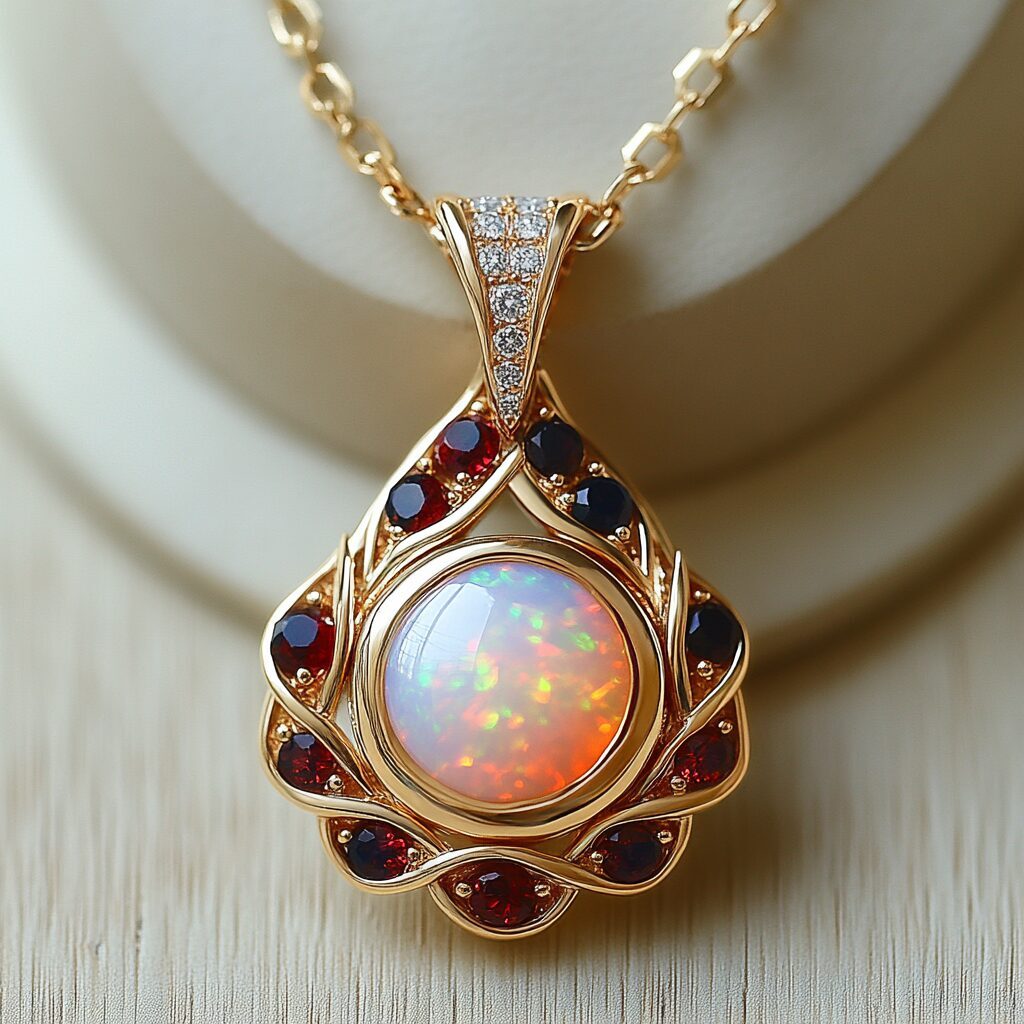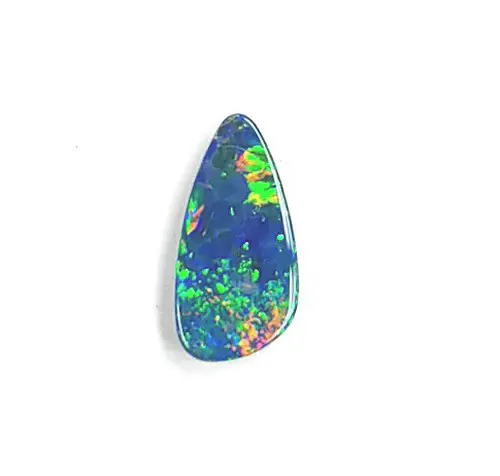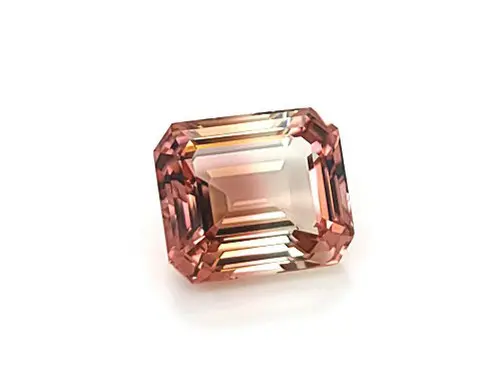
The Two Birthstones for October: Opal and Tourmaline
October, the heart of autumn, is known for its rich colors, cool breezes, and sense of transformation. For those born in this month, the birthstones that represent October—opal and tourmaline—are just as vibrant and multifaceted as the season itself. These gemstones are not only breathtaking in their beauty, but they also carry deep symbolic meanings that reflect the qualities of those born under them.
While opal and tourmaline are both the official birthstones of October, they are vastly different in terms of appearance, properties, and symbolism. In this blog, we’ll explore the fascinating history, characteristics, and meanings behind these two stunning gemstones.
Opal: October’s Dreamy, Playful Birthstone
Opals have been admired for centuries for their captivating play-of-color, a phenomenon where the stone exhibits a rainbow of shifting hues depending on how light strikes it. Ancient Romans believed opals were the most precious gemstones because they contained all the colors of every other gem. The name “opal” is derived from the Latin word “opalus,” which means “precious stone.” Throughout history, opals have been associated with good fortune, purity, and love.
The majority of the world’s opal supply comes from Australia, specifically from regions like Lightning Ridge and Coober Pedy. These areas are known for producing the most valuable and sought-after opals, particularly black opals and white opals.
Characteristics of Opal
What makes opal stand out among gemstones is its dazzling array of colors, often called its “play-of-color.” This iridescence occurs because of the microscopic silica spheres within the stone that diffract light, creating flashes of different colors. Opals can range from translucent to opaque and come in a variety of body tones, including white, black, and fire (orange/red).
The rarest opals display a full spectrum of colors, while others may focus on specific hues like blue, green, or red. Black opals, which have a dark body tone, are considered the most valuable because their deep base color highlights the brilliant flashes of color within the stone.
Symbolism and Meaning of Opal
Opals have a long history of deep meaning and are thought to bring different benefits to its wearer. They are often seen as a symbol of hope, creativity, and emotional balance. Their play-of-color represents the myriad emotions and experiences that make up life, making opal an ideal stone for those who value self-expression and individuality.
One of the more mystical qualities of opal is its connection to emotional healing. Because of its association with water (many opals are hydrous minerals), it’s believed that opals can help calm emotions and provide clarity during times of stress or confusion. The stone is also linked to intuition and psychic abilities, encouraging people to trust their instincts and tap into their inner wisdom.
Additionally, opals are considered stones of love and passion, often given as tokens of affection. They are thought to intensify feelings and desires, making them a popular choice for romantic jewelry.
Tourmaline: A Gemstone of Diversity and Strength
Tourmaline, October’s second birthstone, is as colorful and dynamic as opal but in its own unique way. Unlike opal, which is primarily found in Australia, tourmaline can be mined in several countries, including Brazil, Afghanistan, Madagascar, and the United States. The name “tourmaline” comes from the Sinhalese word “turmali,” meaning “stone of mixed colors,” a reference to the gem’s wide variety of hues.
Historically, tourmaline was often mistaken for other gemstones. For instance, in the 1500s, Spanish explorers believed they had found emeralds when they discovered green tourmaline in Brazil. It wasn’t until the 1800s that scientists began to recognize tourmaline as its own distinct mineral group.
Characteristics of Tourmaline
Tourmaline is known for its wide spectrum of colors, making it one of the most versatile gemstones in the world. It can range from vibrant pinks and greens to deep blues, yellows, and even black. Tourmaline is a crystalline boron silicate mineral, and its color is determined by trace elements within the stone, such as iron, magnesium, and lithium.
One of the most prized varieties of tourmaline is paraiba tourmaline, which is a neon blue-green color and is highly sought after by collectors. Another popular variety is watermelon tourmaline, which features a beautiful gradient of pink and green, resembling the colors of a watermelon.
Tourmaline is also known for its pleochroism, which means it can appear to change color when viewed from different angles. This makes it an incredibly dynamic and exciting gemstone to wear and admire.
Symbolism and Meaning of Tourmaline
Tourmaline is often associated with protection, grounding, and balance. In ancient times, people believed that tourmaline could protect them from negative energy and shield them from harm. Today, many still view tourmaline as a powerful protective stone, particularly black tourmaline, which is thought to ward off negativity and psychic attacks.
Each color of tourmaline carries its own unique meaning. Pink tourmaline, for example, is linked to love, compassion, and emotional healing. Green tourmaline is associated with growth, abundance, and vitality, while blue tourmaline represents calmness, communication, and serenity.
Tourmaline is also thought to enhance creativity and inspire new ideas, making it a favorite among artists and creators. Its grounding properties help people stay focused and clear-headed, making it an excellent stone for those who need a boost in concentration or productivity.
Additionally, tourmaline is believed to help balance the chakras, the energy centers in the body. With its wide range of colors, tourmaline can align with multiple chakras, promoting physical, emotional, and spiritual well-being.
Opal vs. Tourmaline: Choosing Your October Birthstone
While both opal and tourmaline are the birthstones for October, they offer distinct qualities that can appeal to different individuals. If you are drawn to a stone that reflects inner emotions and offers a dreamy, ethereal look, opal might be your ideal choice. Its mesmerizing play-of-color can serve as a reminder of the beauty in life’s ever-changing moments and the importance of emotional balance.
On the other hand, if you seek a stone that offers protection, strength, and a rainbow of color options, tourmaline could be the perfect fit. Its grounding properties and ability to promote creativity make it a versatile and empowering stone for those who want to stay focused while embracing their individuality.
Whether you choose opal, tourmaline, or both, October’s birthstones offer an opportunity to connect with the deeper meanings and energies these beautiful gemstones provide. Both opal and tourmaline can be worn as jewelry or simply admired for their beauty, making them a meaningful gift for anyone born in this month. Shop our collection of loose opal gemstones to find the perfect stone for your custom jewelry or investment piece.



